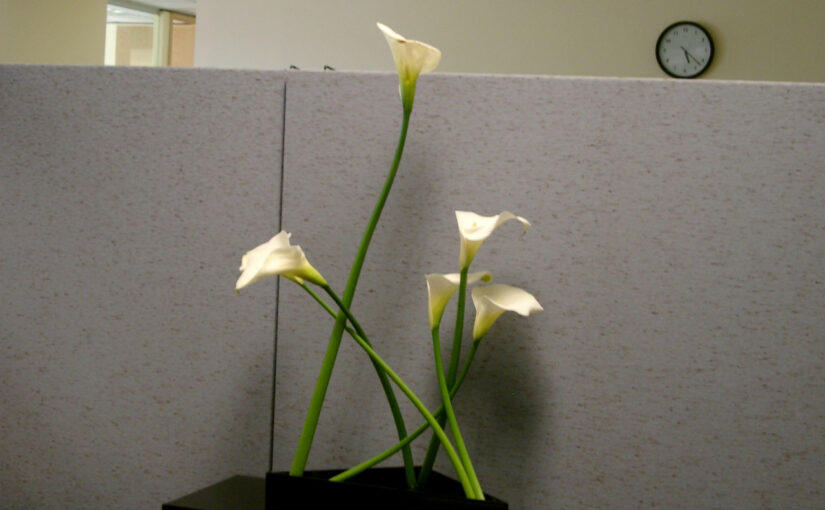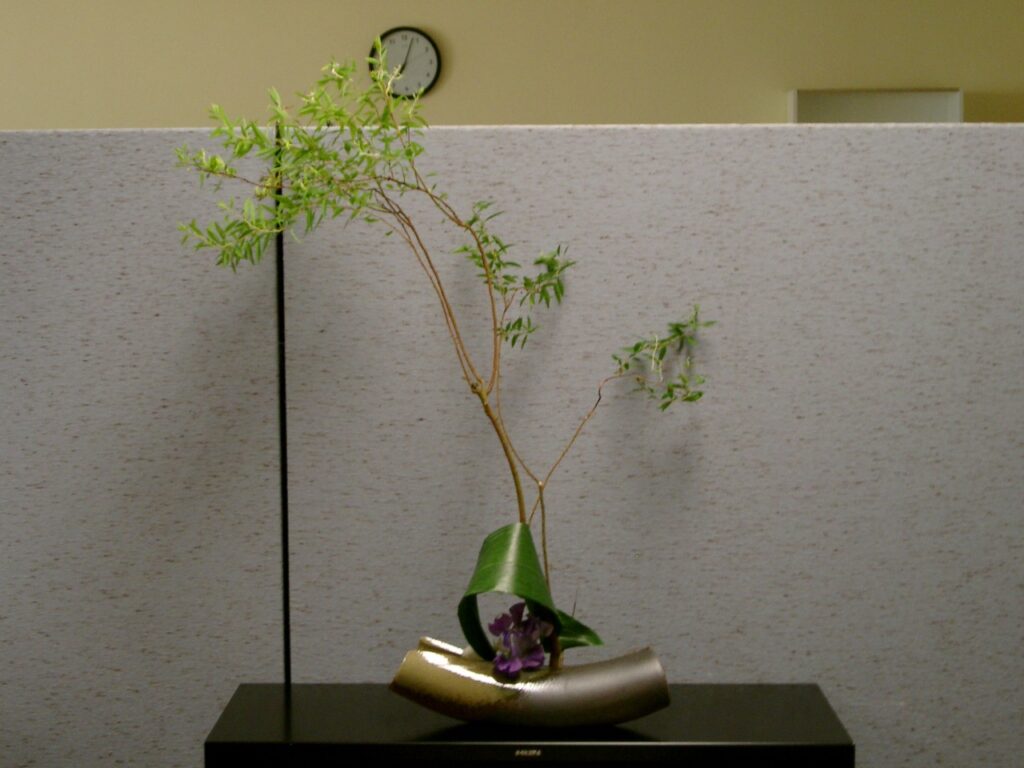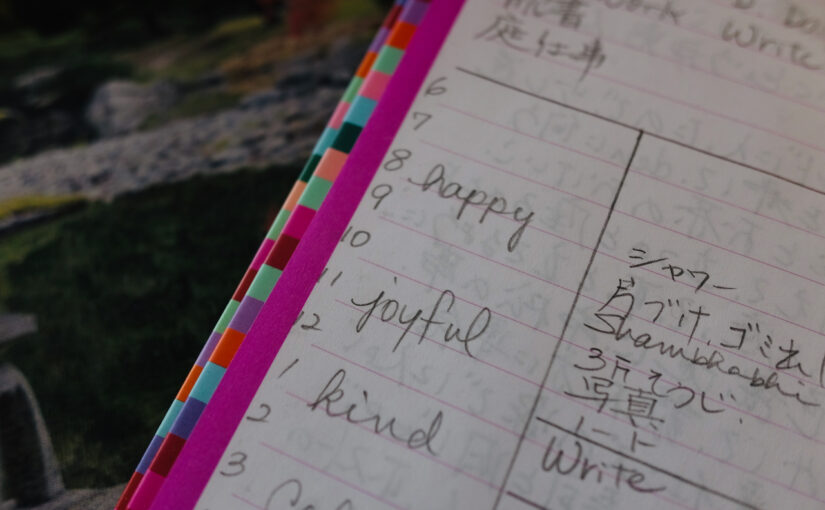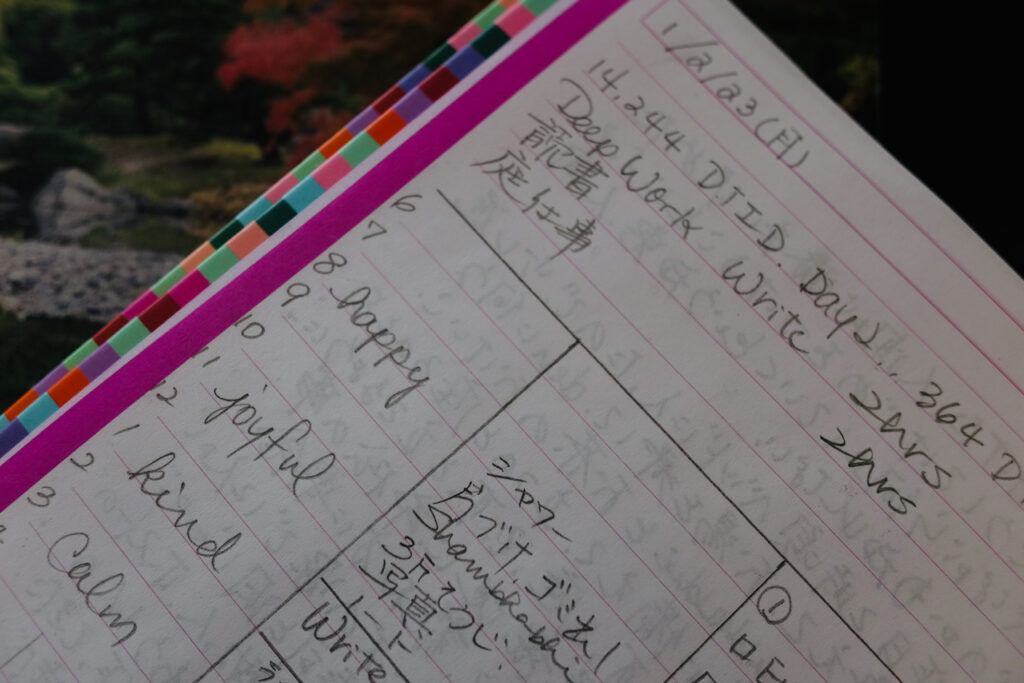Tips for making a delicious bowl of tea
Photo by Author Akemi Sagawa
Now that I see Matcha green tea sold in most grocery stores in the US, I assume many people drink it at home. Are you one of them?
If you would like to enjoy Matcha in a similar way as served in the Japanese tea ceremony but skip all the formal procedures, well, here are some tips!
Have Sweets First
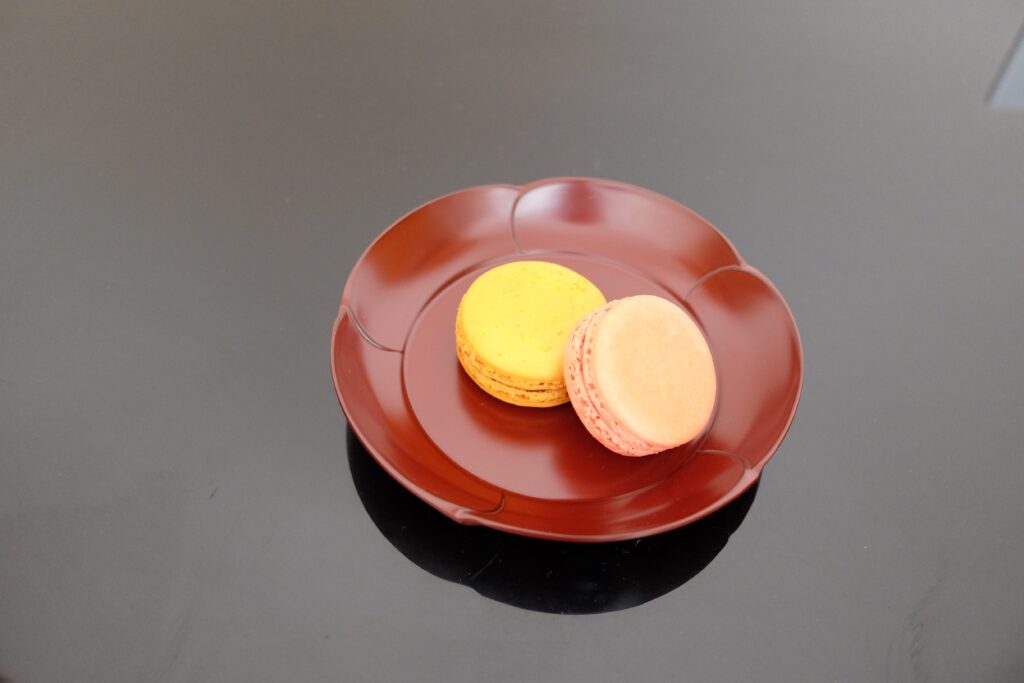
One thing you don’t want to miss when enjoying Matcha…. Sweets!
You have some sweets BEFORE having Matcha. Why?
When making Matcha, you simply mix Matcha with hot water. You don’t put sugar or milk in it. Even though you have Matcha of high quality, it has some bitterness. You want to prepare your pallet by filling some sweetness in your mouth beforehand.
Sweets are like appetizers. The main course is Matcha!
In Japan, there are literally thousands of different kinds of sweets to be accompanied by Matcha. Many of them are made of sweetened bean paste called “an.” (Have you seen a movie called “Sweet Bean”?) Some sweets are dried sugar candies.
If you can’t find any Japanese sweets nearby, no problem. Pick your favorite sweets. A piece of chocolate goes well, especially a white chocolate truffle. Another of my favorite is macaroon.
What you need
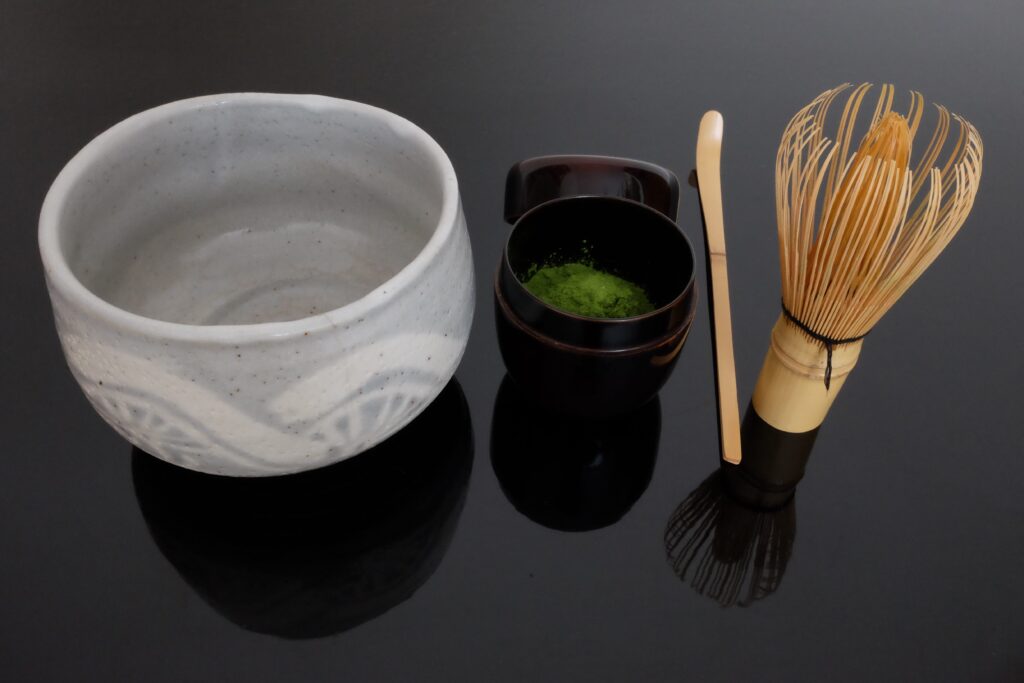
Once you have enjoyed your appetizer, let’s move on to the main course.
You need a bowl, Matcha, a small scoop, a whisk, and of course hot water. The photo shows you the real tea utensils, but you can substitute them with what you find in your kitchen, except for matcha powder. If you can’t find a bamboo tea whisk, a small mixing whisk might work.
One piece of advice is that you sift Matcha powder before making tea. Often times Matcha powder is cramped in the package. When you take it out of the original package, sift it so that the powder is smooth.
Warm the bowl
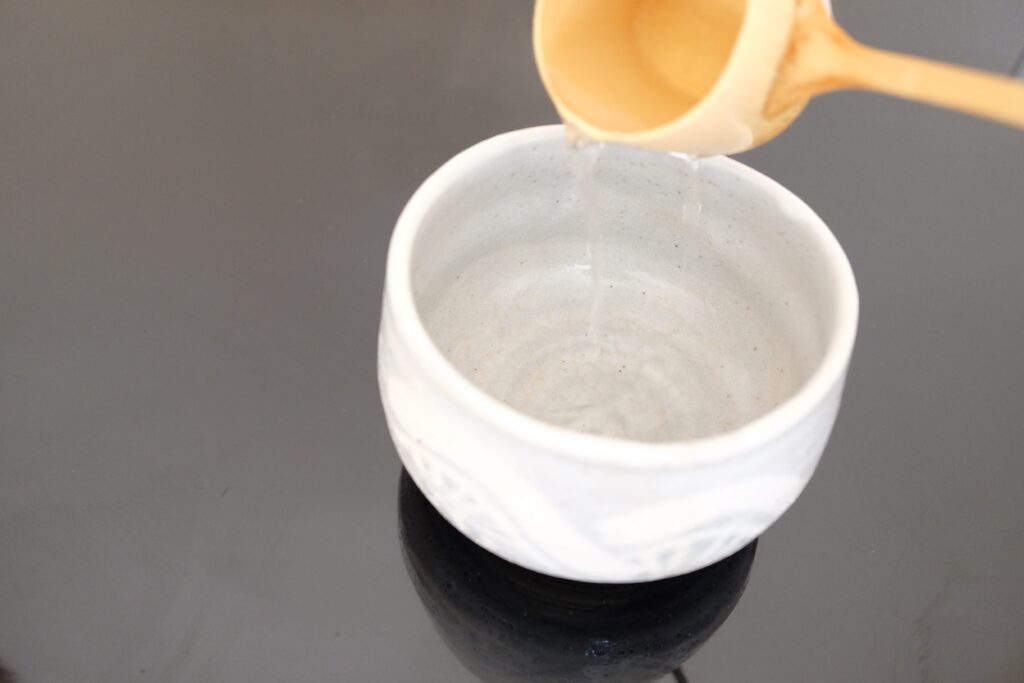
First warm the bowl with hot water. Pour a little bit of hot water into the bowl, and swirl around the bowl so that the heat of the water is transferred to the bowl. Once the bowl is warmed up, discard the water. Unless the bowl is very wet, you can skip wiping it.
Put Matcha
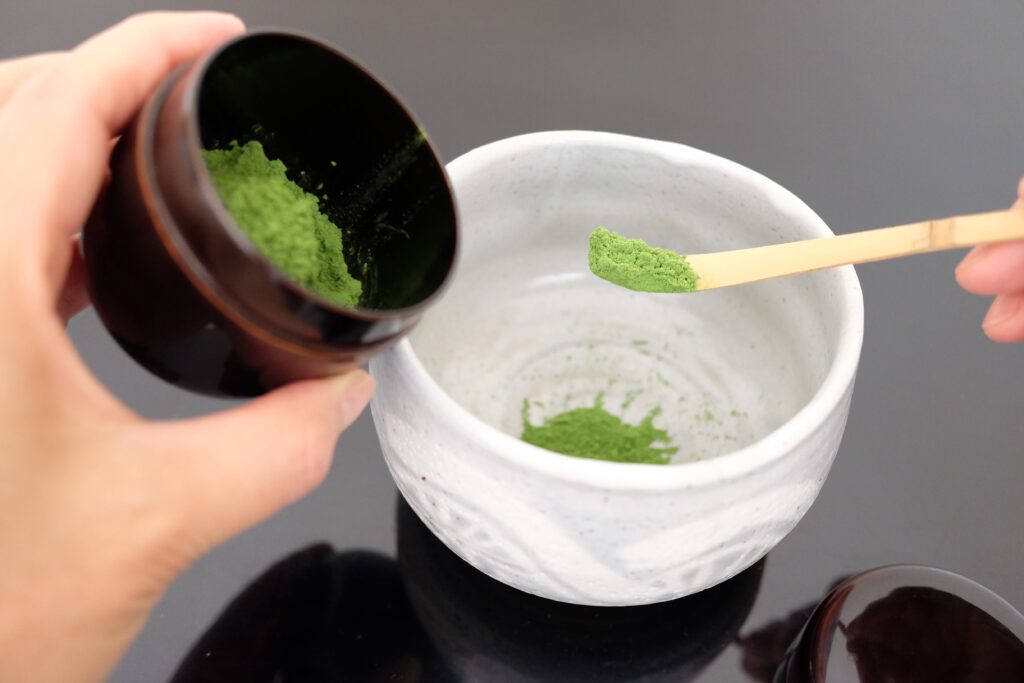
Put Matcha into the bowl, two scoops if you are using the bamboo scoop. Or about one teaspoon full.
Pour Water
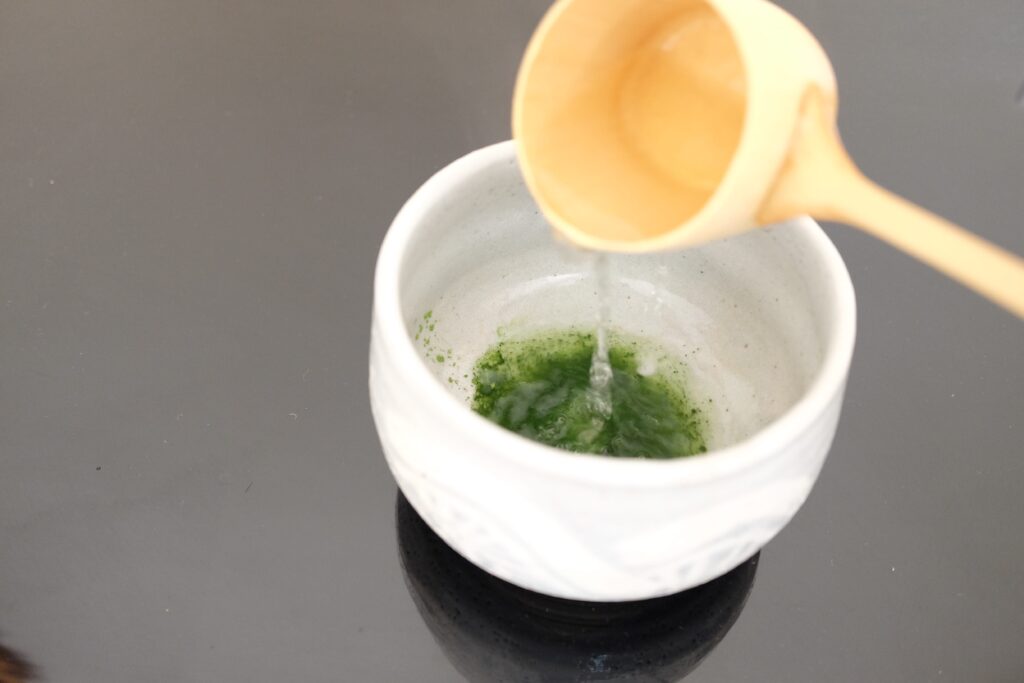
Pour hot water into the bowl, about 50cc. Pour water quietly, so that Matcha doesn’t scatter around.
Whisk
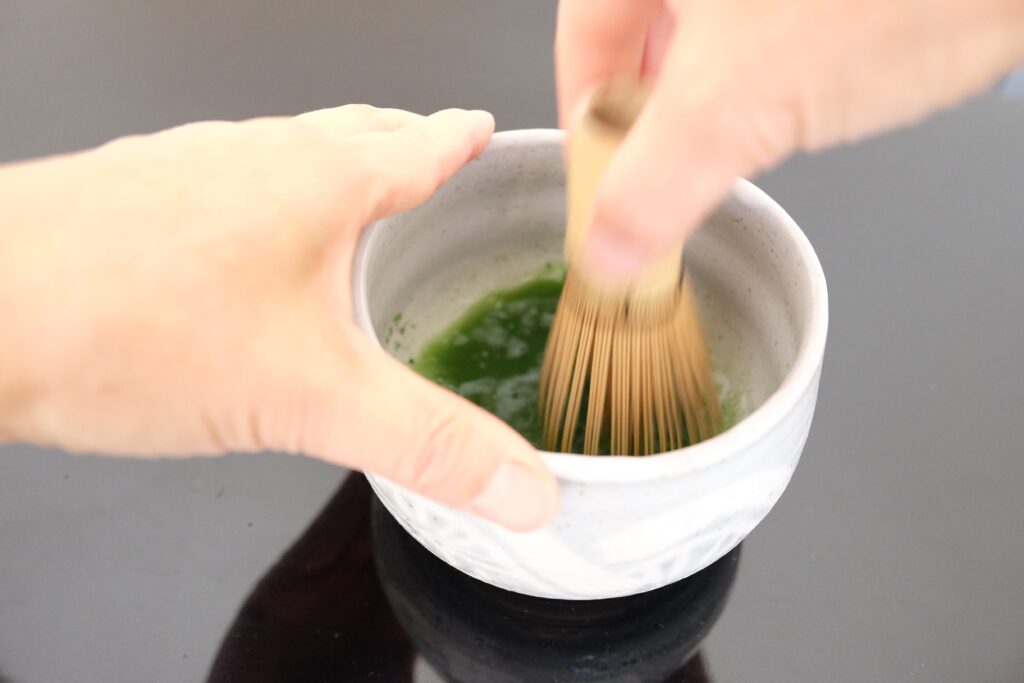
Then you hold the tea bowl with your left hand, pick up a whisk with your right hand, and start whisking.
Another tip… Using your wrist, move the whisk up and down, up and down, quickly. You want to create a nice fine foam on the surface. Do not circle the whisk around in the bowl. If you circle around the whisk, you won’t be able to create nice foam.
Why create form on the surface, you might ask.
The foam mitigates the bitterness. With the sweet as an appetizer, and with the fine foam created by whisking, you get to taste Matcha at its best condition!
Enjoy the tea!
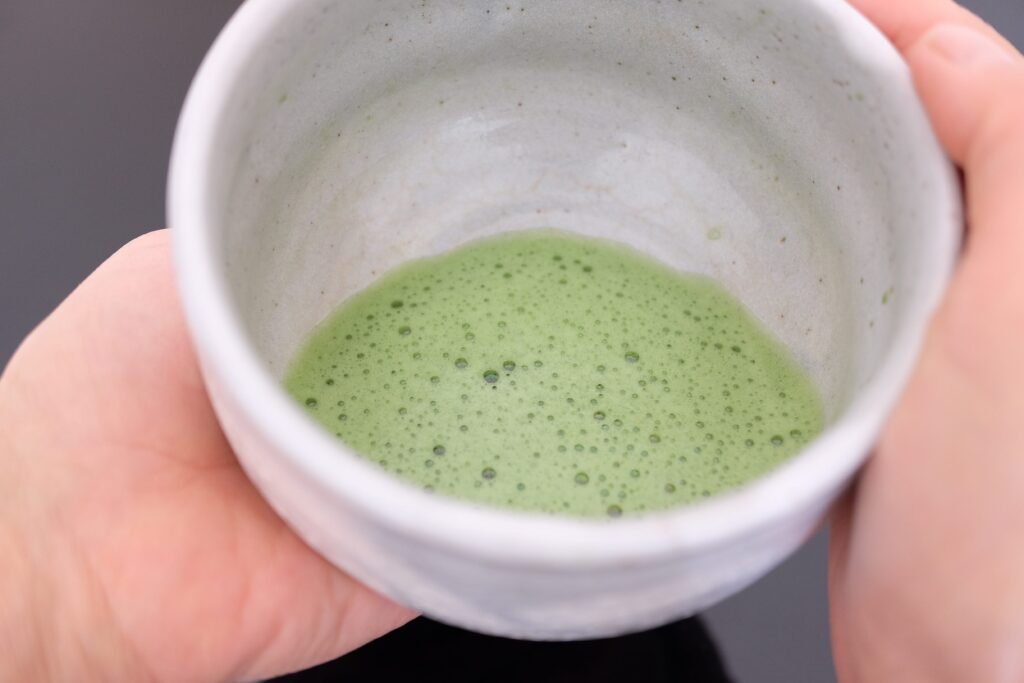
Once the fine foam is created, it’s time to enjoy the main course! Place your left hand under the bowl, and your right hand on the side of the bowl. Enjoy!

